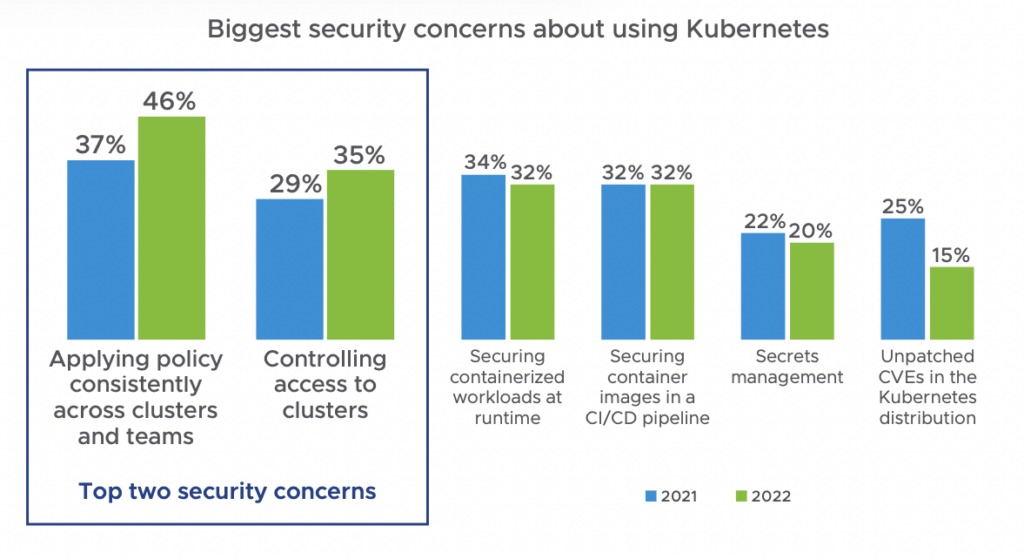
A new “State of Kubernetes” report sponsored by VMware shows continuing strong growth for Kubernetes adoption, despite its complexity.
The researchers analysed responses from 776 IT professionals from organizations with more than 1000 employees, mainly in the US (75 percent) or Europe (17 percent). Some 36 percent of those responding represented companies with more than 10,000 employees.
There is plenty of evidence for growing Kubernetes adoption. In 2020, a similar though smaller survey found 30 percent of respondents with 5 or fewer Kubernetes clusters, and 15 percent with more than 30. The new report shows just 12 percent with 5 or fewer clusters, and 29 percent with more than 50. Two-thirds of those with over 100 clusters expect usage to increase by a further 50 percent this year.
How many nodes in a cluster? Responses varied a lot, but 61 percent said between 6 and 20 nodes. 14 percent of these organizations have more than 200 employees focused on Kubernetes.
Questioned about the rationale for Kubernetes adoption, the biggest stated benefit was increased flexibility of applications (62 percent), followed by improved cloud utilization, better developer efficiently, cost reduction, and for 37 percent, the need to improve operator efficiency.
The VMware pitch is that its technology enables the same management tools to be used across multiple public clouds, so it is not surprising to find the research giving this matter close attention. Large organisations tend to have diverse IT deployments for numerous reasons, such as legacy systems and acquisitions, and not necessarily as a matter of conscious strategy.

More than half of those surveyed have on-premises Kubernetes, dropping slightly from 55 percent in 2021 to 52 percent this year, while the number using multiple public cloud vendors increased from 36 percent to 46 percent. The number using a single public cloud vendor, possibly alongside on-premises, dropped from 47 percent to 42 percent.
But why?
Unfortunately the researchers did not ask the reason for adopting multi-cloud Kubernetes. Cloud economist Corey Quinn believes that “there are no articles or conference talks of companies talking about their successful multi-cloud strategies paying off” despite acknowledging that “VMware’s entire business is predicated on this bet paying off.”
Microsoft’s James Serra, a big data solution architect, said last year that “the multi-cloud approach will prove to be short lived and in time most companies will choose one CSP [Cloud Service Provider] and stick with them so that they can go deeper and leverage the services and ecosystem fully as applications modernize.”
That said, the new report shows that multi-cloud Kubernetes, whether by strategy or accident, is commonplace. Perhaps it is hard to avoid.

Despite surging Kubernetes adoption, there are still challenges. Questioned about management issues, 44 percent stated that they have inadequate internal expertise (down from 53 percent last year). Meanwhile, 41 percent said it was difficult to manage cluster lifecycle and upgrades (up from 36 percent in 2021). 36 percent cited difficulty integrating with current infrastructure (up from 30 percent).
The top challenge, according to the report, is security and compliance, both in deploying Kubernetes (59 percent) and managing it (47 percent).
The full report is here.
